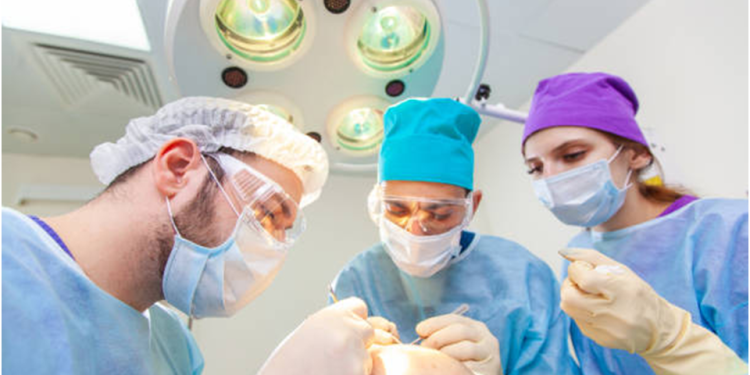For men or women, hair loss is a problem that affects all. You can approach a Dermatologist or a trichologist to seek remedies for further prevention of hair loss or hair transplant options. Regrow Hair Transplant Clinic in Haridwar, India, has successfully helped thousands of individuals in hair restoration.

Hair Loss-Treatments and Transplant:
Hair loss is a dilemma that people encounter irrespective of their age or gender. We can attribute hair loss to various factors in an individual’s life.It may be due to the environment, lifestyle, genetics, or some existing medical condition responsible for hair loss.We will discuss these factors further down in brief. You need to know that there are options available for an individual to get the crowning glory back.There are medications, oils, and hair transplant options that are patient-specific based on the patient’s medical history.
The best thing for you to do is consult with the best hair specialist near you, or you can choose the hair specialist based on their reputation, irrespective of the location.Dr. G.K. Sharma Is a reputed doctor all over India who has a vast successful experience of 30 years and more. He is associated with Regrow Hair Clinic in Haridwar, India.It is one of the best hair transplant clinics in India.Dr. G.K.Sharma also specializes in cosmetic corrections and skin surgeries.We will briefly discuss the aspects of hair loss and the services that Regrow Hair Transplant clinic offers that are patient-specific to obtain the best results.
What are the causes of hair loss?
Hair loss in an individual can be attributed to any of the following factors:
Lifestyle and environment: If you happen to be one of those people addicted to junk food, alcohol, sleep disorders, you are sure to damage your metabolism.
If your metabolic rate is not good, it leads to hormonal imbalances. These hormonal imbalances may or may not lead to immunity disorders, but they will surely lead to hair loss.
The place where you stay is also a factor contributing to hair loss – it may be due to the weather itself or the water supplied to you. Lack of humidity causes hair fall, and so does hard water.
Genetic/hereditary factors: Men and women both are susceptible to genetic or hereditary hair fall.
In men, it is called male pattern baldness and is caused by dihydrotestosterone. If your scalp is reacting to the presence of this hormone, the growth phase of the hair is shortened. Also, the follicle becomes smaller, due to which the hair becomes finer and fewer.
Typically, in men, hair thinning and loss start after 30 and are most noticeable by 50 years of age.
In women, hair loss is attributed to androgens, a type of hormone that affects due to heredity.
Other than that, women experience hair fall due to menopause and hormonal imbalance.
By the age of 50, even women are affected by hair loss and thinning.
Other factors attributing to hair loss are:
- Chemotherapy
- Autoimmune disorder
- Injury to the scalp
- Allergic reaction to hair products.
- Trichotillomania- a condition in which one pulls out their own hair.
A good hair transplant surgeon will first study your case well and, if it is possible, will present you with all the options, both surgical and nonsurgical, for hair restoration.
When the clinic you go to is transparent about hair transplant costs and has a preceding reputation about its success rates, it is worth the time and money you will put into the procedure.
Regrow Hair Transplant Clinic in Haridwar is one such clinic.
Nonsurgical treatments options for hair restoration:
Although very popular, surgical options like hair transplantations, in rare cases, may cause some side effects.
Many safe hair restoration techniques do not involve an invasive approach.
Some of them are discussed below:
FDA approved use of Minoxidil:
When the scalp is affected due to the presence of DHT, the scalp gets inflamed, affecting the hair follicles. The hair follicle shrinks, so the blood vessel cannot supply blood to the follicle. It causes a lack of nutrition for the follicle. Gradually the hair follicle dies, and it results in hair loss.
Minoxidil is basically rogaine. It was primarily used to treat ulcers and enlarged prostrate. Hair loss treatment was discovered as a side treatment. It helps by dilating the blood vessels.
Another FDA-approved drug is Propecia or Finasteride.
It is used to treat androgenetic alopecia. It works by directly acting on the DHT. The disadvantage is that lack of DHT may affect the sexual organs.
Other methods for nonsurgical hair restoration include:
- Low-level laser therapy.
- Micro-needling.
- Scalp tension reduction device.
- A balanced diet.
If these techniques may not be of use to you, the surgeon will advise hair transplant.
Who is a good candidate for a hair transplant?
For the surgeon to deem you fit for a hair transplant, you should
- Have no pre-existing medical condition
- Be above 25 years
- Have a treatable form of hair loss, where the progression of hair loss has halted.
Once the surgeon deems you fit for a hair transplant, he will inform you about the procedure techniques available and the preparation required.
The hair transplant process involves extracting hair follicles from a dense portion of your head or any other part of the body and planting it on the recipient site.
The method of extraction of the hair follicle and transplantation differs with the use of instruments that have been continually developed to simplify the process in terms of invasiveness and time taken to complete the procedure.
What are the different techniques used for hair transplant?
Some of the techniques that the hair transplant surgeons use are as follows:
FUT: Follicular Unit Transplant where a strip of the scalp is taken with the hair to extract follicles. This enables a large number of follicles available for transplant preparation.
The follicles are separated and prepared for the implant.
The disadvantage of this method is that the section from where the strip of skin is taken takes time to heal. It leaves a scar behind with no hair growth in that strip area. It gets covered by the development of the hair above it.

FUE: Follicular unit extraction is where the surgeon uses a pen-like instrument to pull out hair individually from the donor site. The advantage of this technique is that it does not leave hair gaps and goes unnoticed. Also, it does not require a long healing time. Again, the follicle is separated and prepared for the implant.
Once the hair follicles are harvested and prepared for graft, the surgeon numbs the transplant area and makes incisions to prepare the scalp for transplant. Once the incision is made, the surgeon plants the grafts, applies antibiotic cream on the head, and bandages the head.
These are techniques you already know about since these have existed for a long time; the latest hair transplant technique is DENSE HAIR TRANSPLANT.
What is dense hair transplant?
In this technique, what is differently done is that the hair follicles are implanted very close. They are within a distance of 2 mm.
To do this procedure, you need specialized instruments.
At Regrow Hair Clinic in Haridwar, India, the doctors use some of the latest instruments to carry out this procedure minimally and invasively.
Advantages of Dense Hair Transplant:
· Less out-of-the-body time of grafts: extraction and implant take place immediately.
· Handling of grafts by SAVA and Choi Implanters: these instruments enable the doctor to implant the graft at a precise angle and depth.
· High Density due to small pilot holes.
· Small diameter Implanters.
· Small diameter punch. Minimal scar.
· Fast, Comfortable and faster healing.
· Painless Needle-free injections for anesthesia.
Post-operative care instructions:
A person who has undergone a hair transplant may experience mild pain and discomfort on the transplant site.
The patient is required to keep the recipient site just mildly moisturized using saline water.
Avoid itching the area when it heals; the skin dries, causing itchiness.
Sleep with your head raised
Avoid rigorous activities.
Rest for 48 hrs – meaning avoids going out of the house.
Take your medications and follow the hair care instructions given by the doctor.













